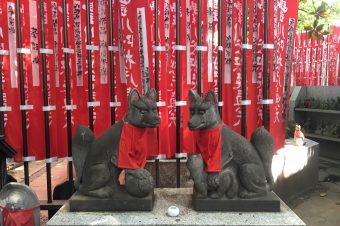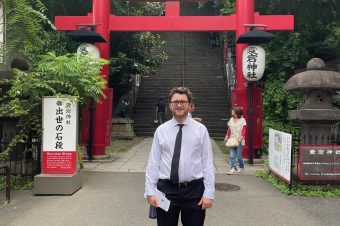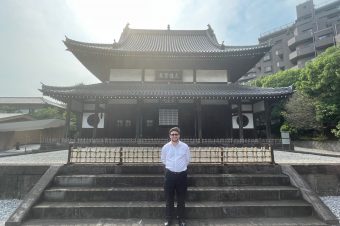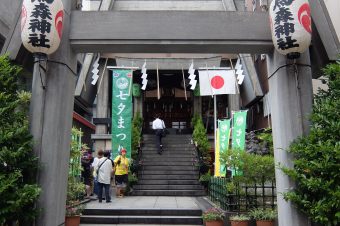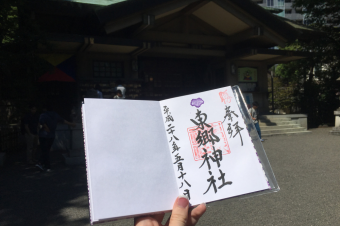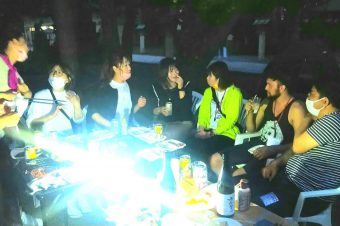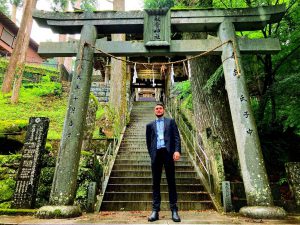
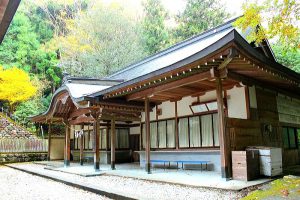

After crossing the Kyujo Bridge over the Omogo River off of Route 33, it is a 14 minute/4.3 km drive up a mountain to get to Akiba-Jinja Shrine, located in Niyodogawa, Kochi Prefecture. We were greeted by a Shinto priest who showed us all around the shrine. This was actually the first shrine I ever visited, so I had no idea what to expect, but I certainly did not expect for there to be a mini-museum inside.
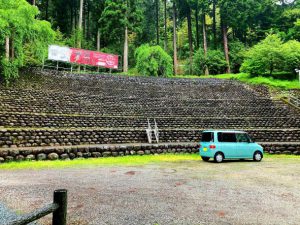
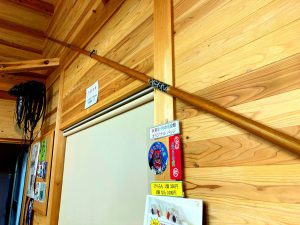
As we pulled arrived at the shrine, the first thing we noticed was layers of neatly stacked rocks forming section of coliseum-like seating (next to it is our car for perspective scaling), and I was curious to learn more about what that was for. Well, every year on February 11th, this shrine holds the Akiba Festival which brings a large gathering of people, and they all need a place to sit and enjoy the show.
The god of the Akiha-Jinja Shrine is the Shinto fire god, Hobusubinomikoto, a female god who has faith in fire protection and disaster avoidance. During the festival they have a torike (a long pole with feathers attached) which they take turns tossing into the air. It all looks in good fun, and everyone attending always has a wonderful time. Unfortunately, I attended in May, and I did not get to see this glorious festival.
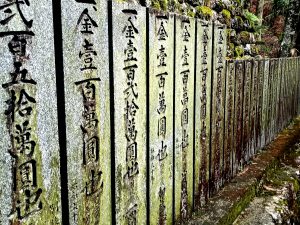
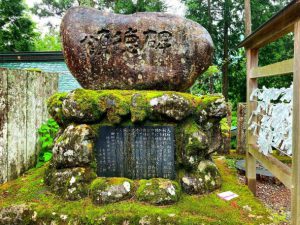
Above you can see monuments to donors who helped manifest this shrine. Money aside, it could not have been walking miles up and down a mountain with supplies to build a shrine. With all the stones, wood, and lack of vehicles at the time, it could not have been easy and obviously took multiple trips to accomplish. If I were to bring one of the stone donor monuments up that mountain, I would not mind having a stone of my own.
Today, they remain exactly where they are and collect emerald green moss which gives them quite an aesthetic appearance. It is difficult to even imagine what these rock hard beauties looked like when they were first created.
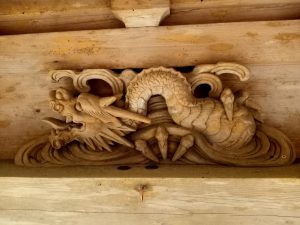
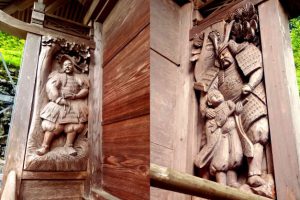
One thing I specifically noticed about this shrine was how detailed and elegant the wooden carvings were. The first picture above is one of twelve carvings around one of the shrine’s buildings; they depict each of the twelve Japanese zodiac animals (rat, ox, tiger, rabbit, dragon, snake, horse, goat, monkey, rooster, dog, and boar), which are directly derived from the Chinese zodiac animals.
On top of the zodiac animals, there are two even more detailed wooden carvings. One appears to be a blacksmith holding a hammer, representing the shrine’s meaning of fire and blacksmithing. The other is of a samurai presenting his son with a small katana, perhaps made by the blacksmith, representing the importance of fire and blacksmithing, and how it creates community between us.
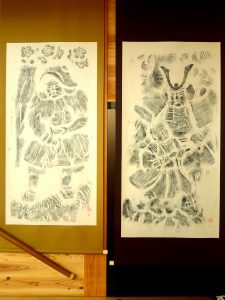
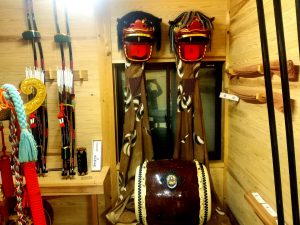
Lastly, we took a walk through the shrine’s mini-museum. The artwork which stood out the most to me was the vertical drawings on the wall. As you can see, drawings are sketches of the two wooden carvings on the shrine building I mentioned early, the blacksmith and the samurai. Just look at all the detail that went into these two sketches, that kind of work takes a lot of time, precision and effort.
The little museum had a few pieces of tradition as well. Those are the masks people would wear as they lead the people to the festival uphill, and also for when they threw the long, hairy sticks into the air. You can also see a taiko drum which could be played for entertainment or to begin a festival with a suspenseful beat.
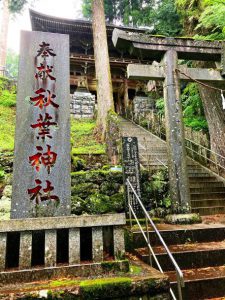
As we walked down the steps of the shrine, and back through the torii gate, we brought our adventure to Akiba-Jinja Shrine to an end. We saw and learned a lot about Akiba-Jinja Shrine, and it was a nice place to clear our mind. Shrines have a way of making a person forget about everything else in the world, and enjoy what is right in front of you at that very moment, kami.
